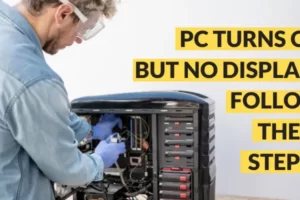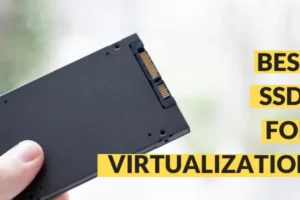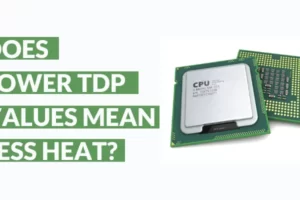It’s so strange and oddly mesmerizing how owning a handy-cam was an option chosen by a few just a few years ago.
Camera was an exclusive accessory that you bought and used for special occasions.
Fast forward to the current day, and every pocket has a camera in it.
Couple that with what we call the internet and the sheer video production that the world is seeing, and all this is nothing short of phenomenal.
And of course, the first demand of any kind of recorded media is storage. The odd thing about storage is, it’s never enough.
Especially if you are involved in any kind of video production very quickly will you realize, hey I am running out of space.
Of all the domains of applications that demand big data storage, video production is without a doubt one of the biggest generators of the ever-increasing storage demand.
Ranging from photographers, YouTube content creators to filmmakers, all demand a video editing process that has power, speed, and of course excess storage.
The solution to all that extra footage is obviously a simple straightforward one, i.e., getting more storage in the form of hard drives, SSDs, etc.
While the solution is simple, you encounter more issues and limitations as your video editing process grows more expansive and involves a team.
Eventually to streamline everything all editors look towards a NAS or RAID-based storage/editing process.
So, first things first,
Can You Edit Off a NAS?
The answer is yes you can and if you do it right it offers so many distinct advantages over your traditional HDD/SSD storage setup. That being said, editing off a NAS drive isn’t plug-and-play and will require an experienced hand to set it up.
Until recently, most editing setups used and were happy with editing off internal/external HDDs/SSDs. But as things progressed, online technologies found pace and people developed a love for 4K performance and storage demand increased too.
From SATA drives people in order to have enhanced performance moved on to NVMe SSDs and Thunderbolt DAS RAID storage units.
This was a good switch; the only problems were first, the prohibitive costs of NVMe drives in addition to their low capacities for the given cost.
And second, was the poor portability of Thunderbolt RAID DAS apart from their single connection architecture.
And thus, the question can you edit off a NAS becomes relevant.
In the subsequent sections, let’s get a little deeper into the topic and discuss all related topics around the general vicinity of can you edit off a NAS.
Read the article till the very end because I want you to leave this page with a lot of insights regarding NAS based video editing process.
Also, here are more articles that I feel someone like you who is interested in storage might like
- Best NAS for 4K streaming
- Best NAS hard drives to get for your NAS box.
- Best SSDs for video editing.
- How to use SSDs for video editing?
- Is SSD important for video editing?
- Are curved monitors good for video editing?
Advantage of Editing of A NAS
So, I explained how the video editing process went in stages from using HDDs to SATA SSDs to NVMe drives, and is now gravitating towards finding better solutions.
So, in what ways does a NAS-based environment benefit in a task like video editing.
- Performance Improvements: When you edit off a NAS over 10Gbe you can receive around 1000MB/s performance which if you wish can be further improved using link aggregation or network interface port upgradations. On Thunderbolt NAS the performance metrics can hit 1600MB/s.
- Hardware Upgrades: With traditional SATA/NVMe mechanisms you have a hard cap as to how high you can go. With NAS you can upgrade the connection without changing the current storage units by PCIe upgrades on both NAS and external card adapters to elevate the connection to double, triple or even quadruple of the current performance.
- Incredible Scaling: As your video editing process goes more expansive and involves more people, a NAS based editing environment allows you to have multiple users in the process chain. The different users can access NAS at once and you can even customize speed and priority of access to each of these users.
- Secure Backup: So, not only will you be edit off a NAS you will also have a secure footage backup strategy. People who work with video are always looking for a way to back up their raw footage. Incorporating a NAS into your backup strategy will in a systematic way reduce the chances of you ever losing your data.
- Remote Work: In a NAS based editing environment you can upload raw footage remotely when away from your PC so that when you actually return to your desk you can start editing right away.
Best NAS for Video Editing
Now that I have relayed the different advantages of having a NAS-based editing environment, let me share with you the best NAS for video editing that you can buy right away.






Here is the quick rundown of what each of these NAS boxes is like and what stands out about them relative to each other.
QNAP TVS-472XT
Best Budget NAS for Video Editing
- 4 x 3.5"/2.5" Sata III Drive Bays
This particular NAS was released in 2019 but does an excellent job at holding its own when it comes to video editing even today.
It comes with every bit of hardware that a video editing server demands viz., 4 bay storage, 10Gbe connectivity, Thunderbolt 3, NVMe storage bays, and USB 3.0.
For the price point it comes at, QNAP TVX-472XT is actually impressive if you wish to use it as a video editing server.
Synology DS1621XS+
Best Mid-Range Video Editing NAS Box
- Combine built-in 10GbE and optional high-speed NIC for over 3,100 MB/s sequential read performance
- Built-in M.2 2280 NVMe SSD slots permit cache acceleration without using storage drive bays
- Flexibly scale up to 16 drives to increase storage capacity as demand grows
- Back up critical data and reduce your Recovery Time Objective (RTO) with Snapshot Replication
- Use virtualization storage tools to complete your SAN or run virtual machines on a full-featured hypervisor
The DS1621XS+ is Synology’s first Intel powered 10 Gbe NAS.
It comes with 6 drive bays which should be more than enough if you run a small business. It is powered by a Quad-Core Xeon processor and provides NVMe SSD bays in order to provide caching improvements.
One of the best features of the NAS is that it comes with a PCIe slot that you can use to upgrade the connections in the future.
For video editors, this is an excellent feature as without upgrading storage units you can have around 1000MB/s over 10Gbe Ethernet easily.
QNAP TVS-1282T3
- Intel Core i7-7700 3.6 GHz, 64GB RAM, 4-LAN, 2x 10Gbase-T, 4x Thunderbolt 3 port iSCSI, RAID 0, 1, 5, 6, 10, 5+spare, 6+spare, 10+spare, global hot spare, Max 64 GB RAM
- Pcie expansion slot x3, 250W single power supply; built-in M.2 SATA 6GB/s slots & 2.5" Ssd slots; Qtier technology and SSD cache enable 24/7 optimized storage efficiency
- The Network & Virtual Switch app assists network traffic distribution, and re-routes dedicated bandwidth for diverse applications
- Four Thunderbolt 3 (40 Gaps) ports and dual 10GbE network for on-the-fly video editing and rapid file sharing
- Supports QRM+ unified remote server management, center for centrally managing multiple QNAP NAS, virtual machine and container applications, and storage for visualization
Best NAS for Video Editing Hands Down
Okay, so if the budget doesn’t constrain you and you want just the best NAS for video editing for your company or agency, 1282T3 is the NAS solution for you.
The NAS drive is a beast and no less. Yes, you pay a premium price for it but believe me when I say this, this NAS has everything that you would want in a video editing NAS/server.
Starting from the CPU it features an Intel i7 quad-core processor, RAM that can be upgraded to 64 GB, 4 Thunderbolt 3 ports, dual 10GbE ports, and 8 drive bays.
But wait it doesn’t stop there, you also get 4 SSD 2.5” bays and 2 M.2 SSD bays.
As I said the this NAS is loaded with features to make your editing life easier.
For a video editing process that involves multiple users, this NAS device can easily provide 1000MB/s each over the 10GbE and thunderbolt 3 lines.
Of course, the NAS box is hilariously expensive but absolutely worth it for the features it provides and if you can afford it.
Important Tips When Editing Off A NAS
So, those were the best NAS for video editing that you can get your hand on right now.
I could have relayed many more options in the segment, but I felt that because more options create more confusion, let’s just stick to the best by keeping budget as the central point.
If you need me to relay more options for you just email me or tell me your requirements in the comments section below and I will help you out.
Okay, so before I sign off on this article, I wish to share a few tips with anyone who is seriously considering upgrading to NAS solutions to streamline their video production.
As effective as NAS-based video editing, we have to acknowledge that it isn’t as straightforward as your traditional storage setup.
But if you are seriously considering using a NAS-based editing environment, if you can drive past a few technical requirements, the benefits are immense.
Here are a few tips that anyone looking to create a NA video editing server must know.
- For those of you who are going to use HDDs, you will require at least 4 HDDs in RAID5 to achieve the same performance levels as that of an SSD. The more drives you have the better it is.
- Processor is very important when creating a NAS based video editing server. While 10GbE NAS are affordable, you will achieve good transfer rates when you have a good Intel/AMD CPU and at least 2 GB of RAM.
- Install the native software of your NAS brand on at least one client PCs. They don’t cost extra and can be removed whenever you want but they make setting up the video editing server very easy.
- For a NAS based video editing system you need at least 5GbE, 10GbE network or above.
- The top speed of the storage media (SSD/HDD) will be affected by the number of concurrent users on your network. You can have your NAS directly connected with your PC using 10GbE or you can even get a 10GbE network switch and connect multiple users at once but having multiple users will limit your top speed.
- If you have a Thunderbolt 3 system you can use a 10GbE to TB3 adapter to connect your system with the NAS.
Final Thoughts,
So, I imagine you now have a lot of clarity regarding NAS, video editing servers and the general context around them.
Honestly, I wanted to cover the whole ordeal on how to edit video on a NAS server right from setting up the storage to establishing directories on your editing software in this article itself.
But I figured if I do that here, the article will get way too long for its own good.
Plus, I don’t want to shove all the information at once because I like delivering information in bite-size chunks so that your brain can digest it properly.
Therefore, I have decided that I am going to create a separate article showing you how to step by step create a NAS-based video editing server.
So, I want you to subscribe to the blog here so that I can notify you when the article is live.
With that said, I am going to leave you temporarily here only to see you in one of my next articles.
Take great care of yourselves and I will see you in the next one!
Tada!




